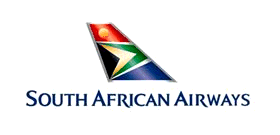 SAA bailed out again
SAA bailed out again
The government has resisted opposition to it providing further bailouts to embattled national airline SAA, allocating R6.5 billion in the Medium Term Budget Policy Statement (MTBPS) to the airline for settling its guaranteed debt and interest and R10.5 billion to implement its business rescue plan. The MTBPS states this allocation was mainly funded through reductions to the baselines of national departments and their public entities, and provincial and local government conditional grants.
The MTBPS made no mention of private sector funders, equity investors and partners for a future restructured SAA.
The Department of Public Enterprises reported in August 2020 that the South African government had received “more than 10 unsolicited interests for SAA and its subsidiaries Air Chefs, SA Airways Technical and Mango Airlines”. The department said at the time that, as the sole shareholder on behalf of government, it had been busy assessing the interests from the several unsolicited local and international Strategic Equity Partners (SEPs) as part of the implementation of the Business Rescue Plan, which was published at the end of June 2020.
The Organisation Undoing Tax Abuse (Outa) said last month current finance requirements of over R10 billion is required by SAA to cover debt and operations costs, aimed at merely keeping the airline limping along. It believes a humane severance package for staff and debt settlement arrangements with current creditors should rather be sought and government should step away and liquidate SAA as soon as possible.
Outa said the business rescue plan requires R24.9 billion to repay debt and R2 billion to restart SAA with a 1 000-employee workforce.
It added that about R16.4 billion is to be repaid over three years, as mentioned in the 2020 national budget, and government is trying to mobilise a further R10.5 billion to implement the R26.9 billion requirement of the business rescue plan. There were reports this week that talks between the government and the World Bank over a $2 billion loan facility had stalled over the alleged insistence by the bank that government commit to not bailing out insolvent state-owned entities using the $2 billion standard loan facility it has applied for, and cutting the public wage bill.
The Democratic Alliance (DA) last week said the International Monetary Fund (IMF), in characteristically diplomatic language, has made its view clear on government’s plan to bail out SAA again. This is according to a response it received from IMF Executive Director Kristalina Georgieva to a letter the DA wrote to her in early October 2020, to draw the fund’s attention to the government’s decision to proceed with a further R10.4 billion bailout for SAA.
It said the IMF has acknowledged the need for the South African government to weigh “subsidies to persistently loss making state-owned enterprises” like SAA, “against alternative uses of scarce public resources, including investments in alternative growth enhancing and/or poverty-reducing investments”.
The DA added that the decision to another lifeline to SAA is at odds with the commitments Finance Minister Tito Mboweni made in his Letter of Intent (LOI) sent to the fund to secure a $4.3 billion emergency loan.
It claimed the LOI clearly commits the government to use the funding from the IMF to support health and frontline services, solve the balance of payments problems caused by the pandemic, protect the vulnerable, support economic reform, drive job creation and stabilise public debt.
